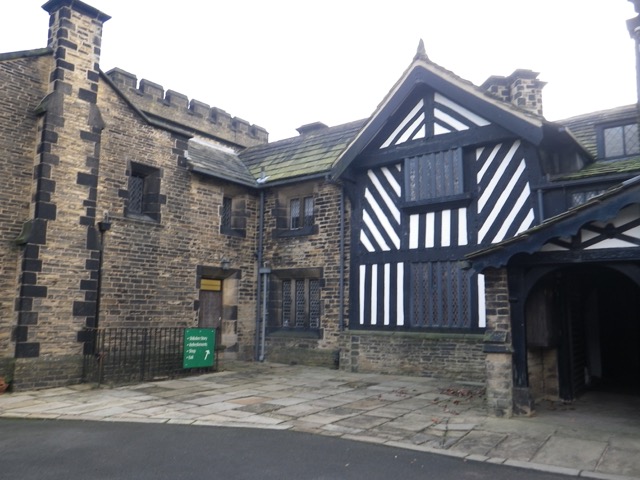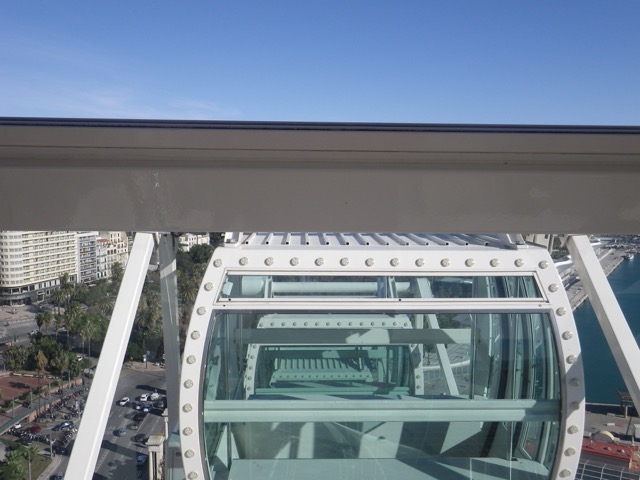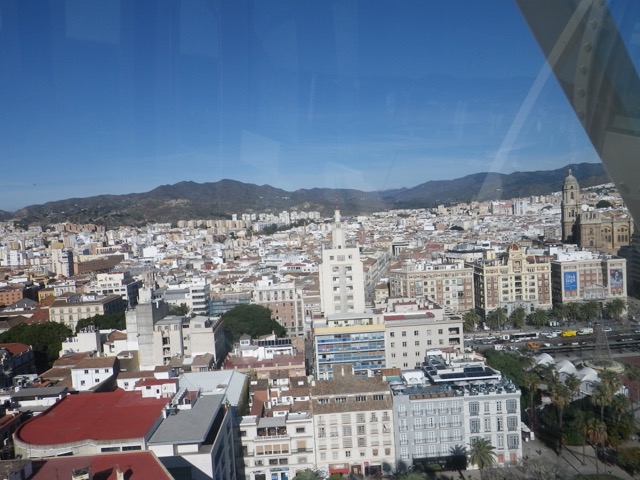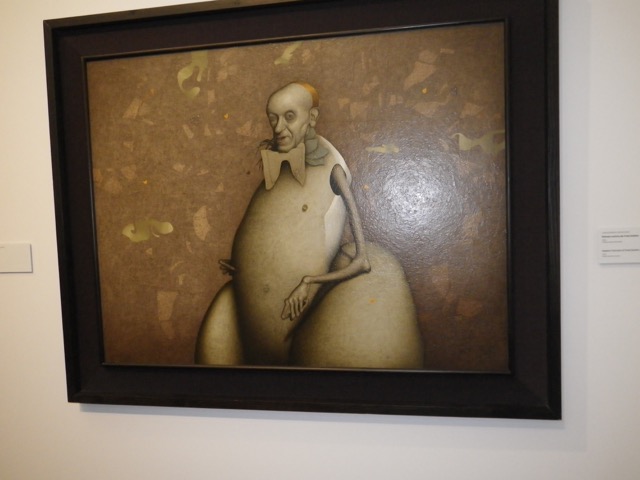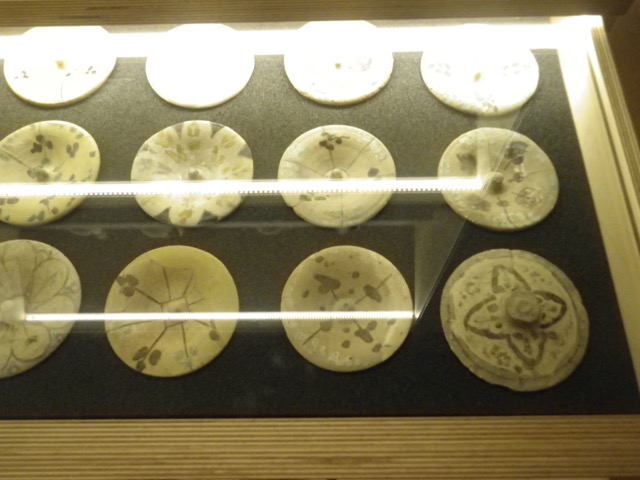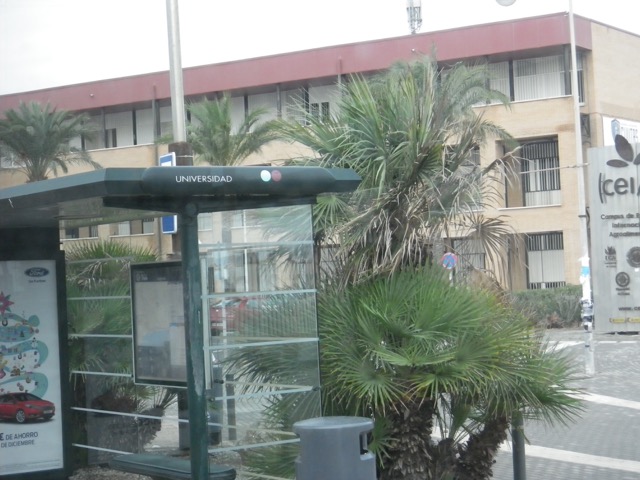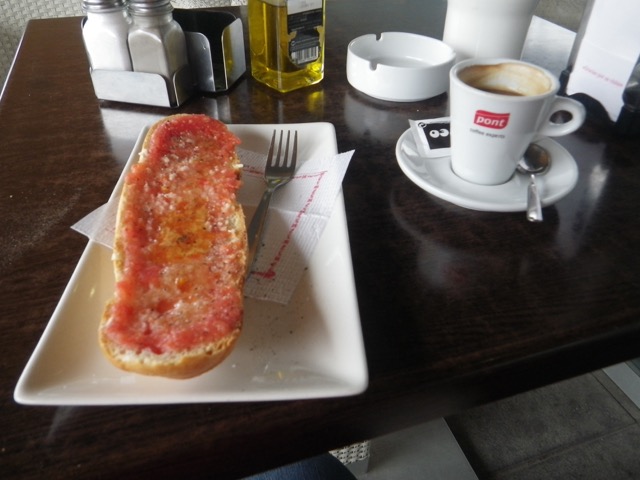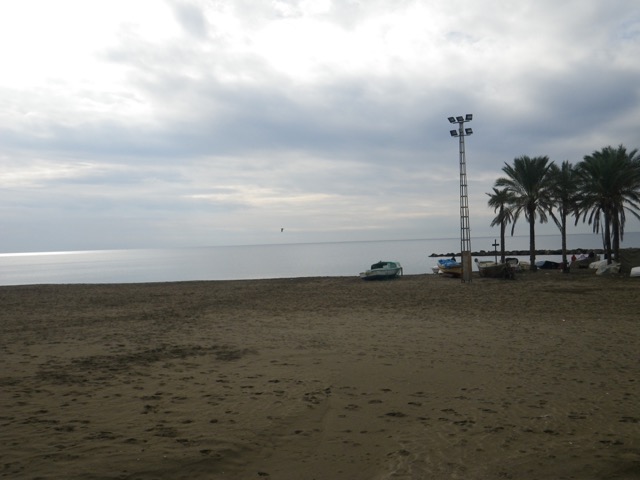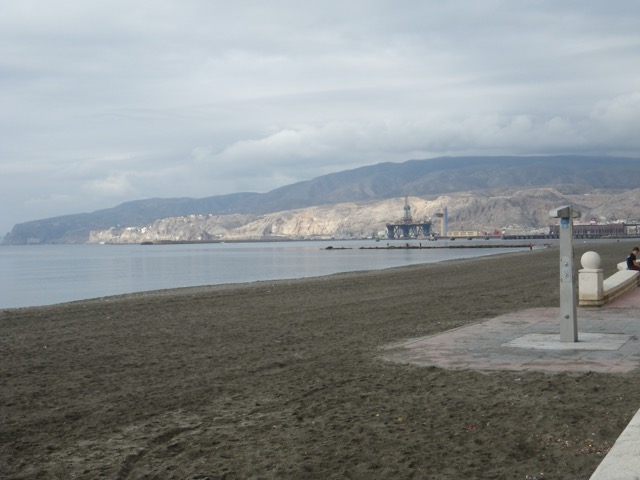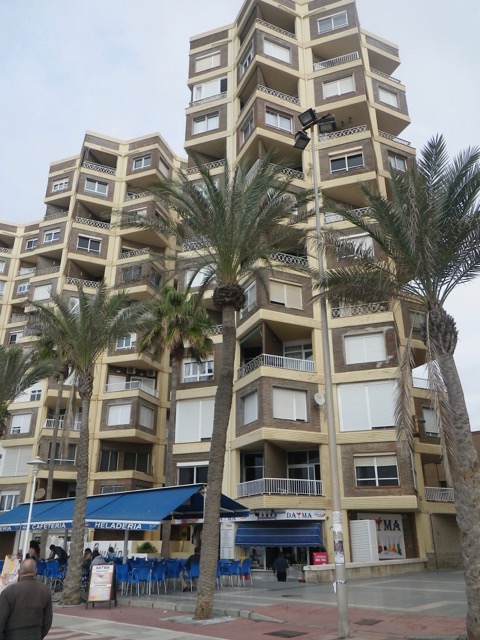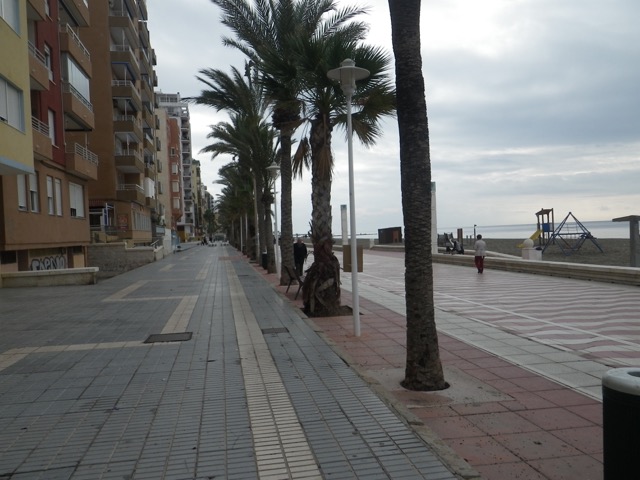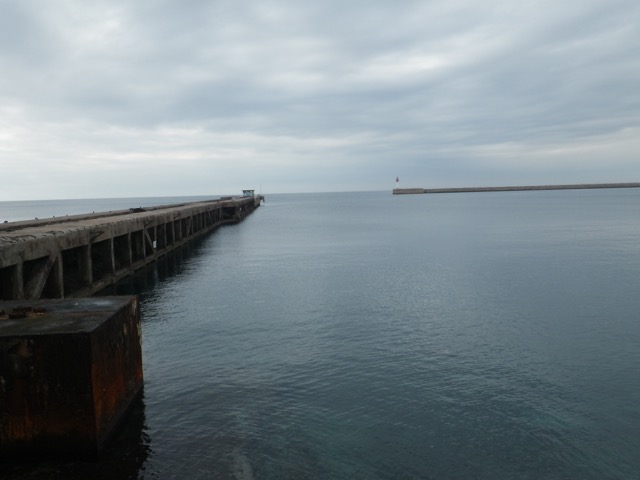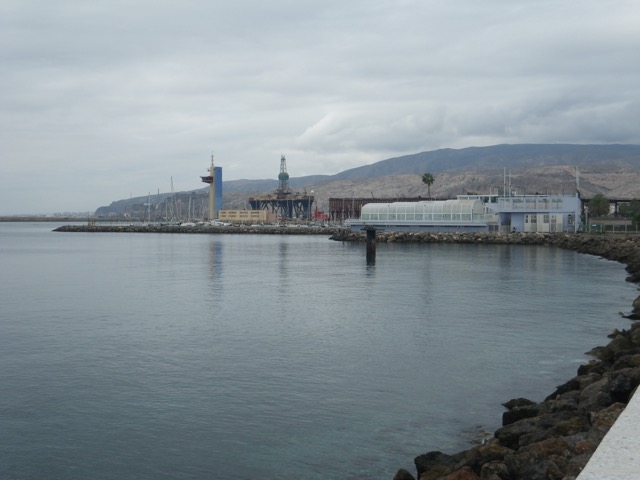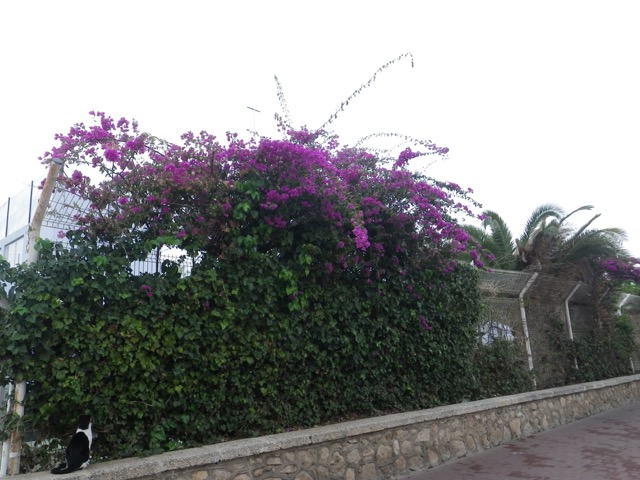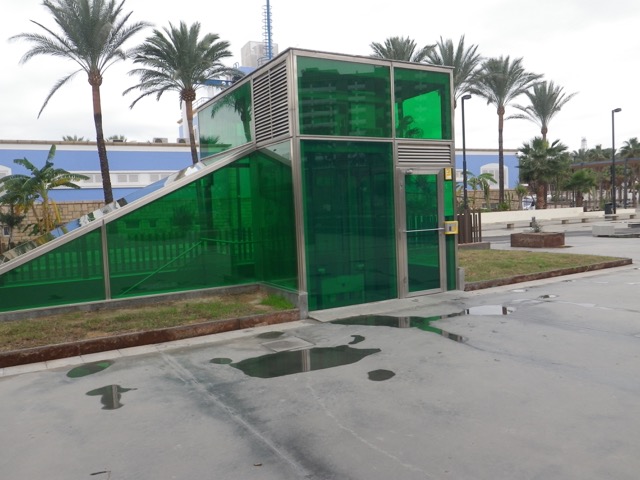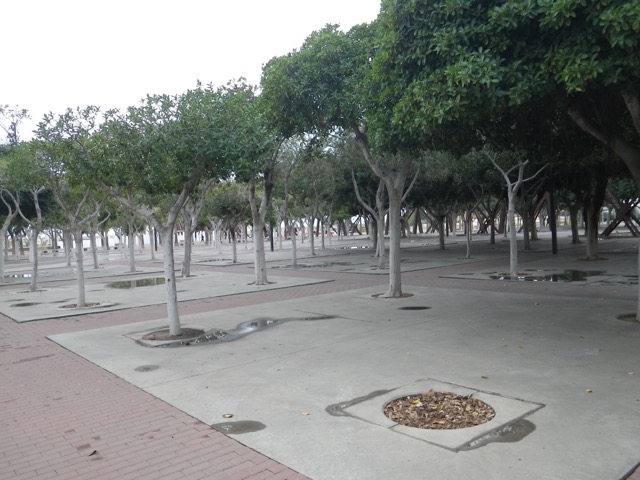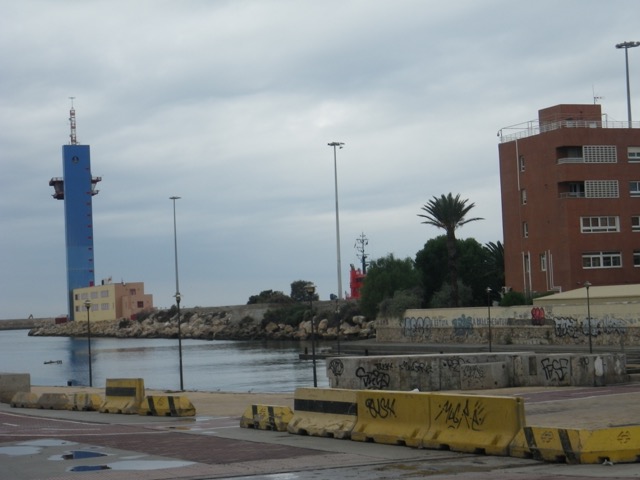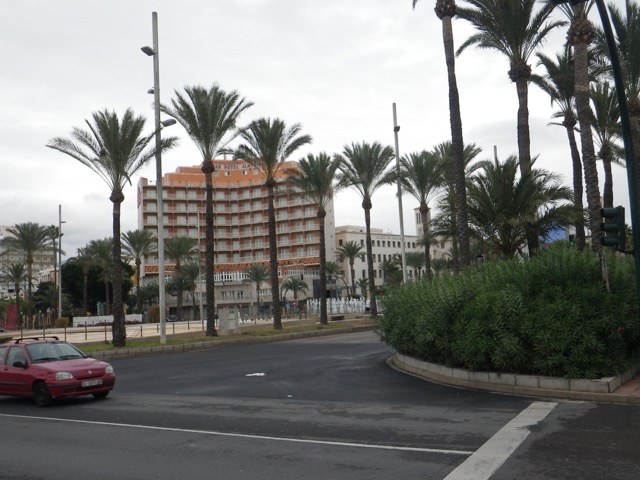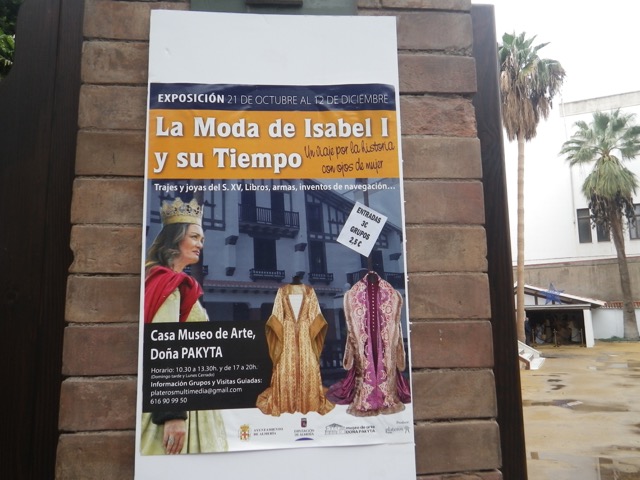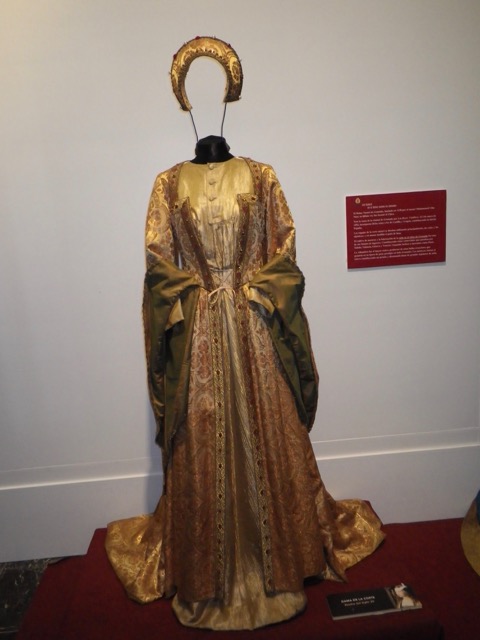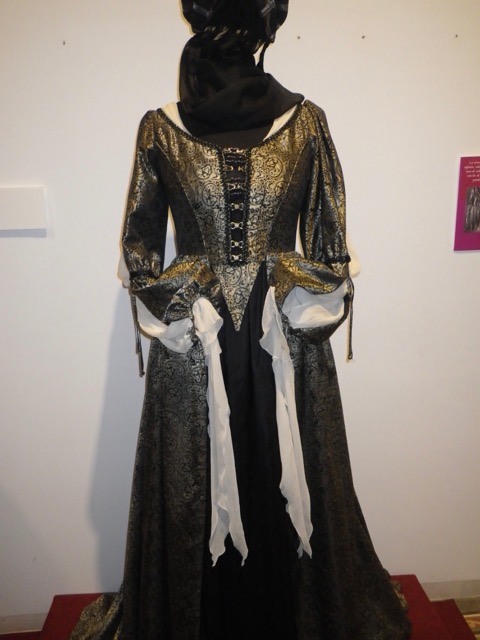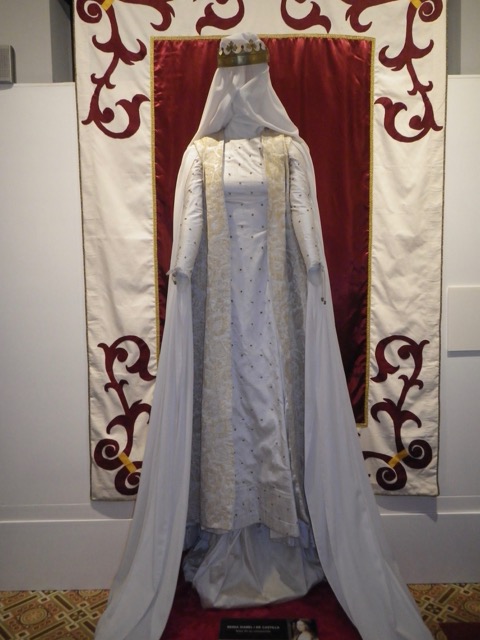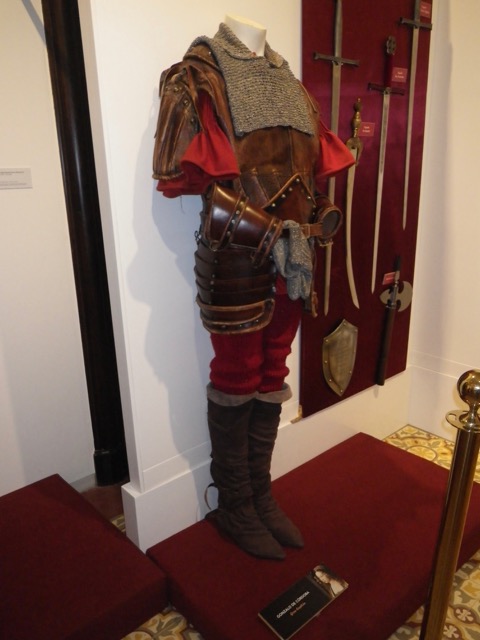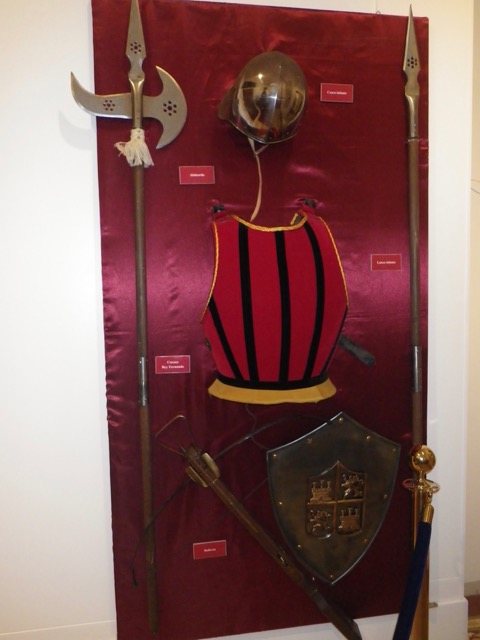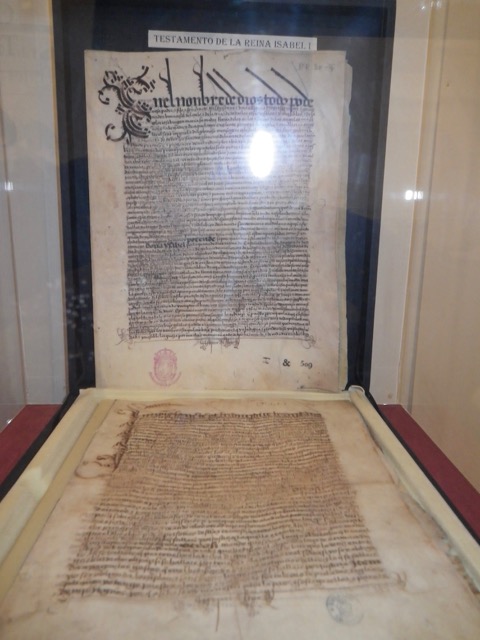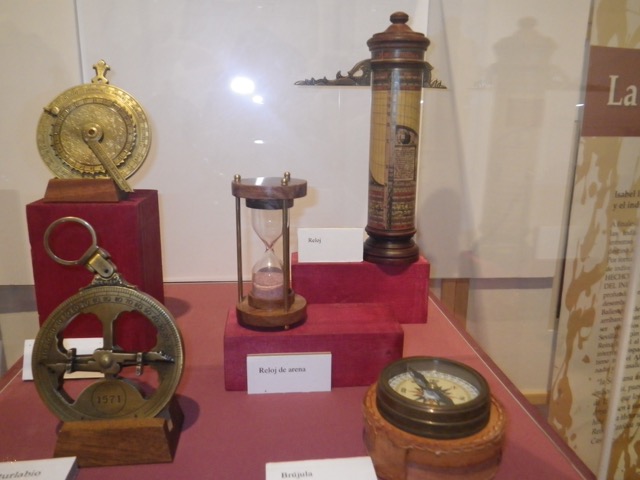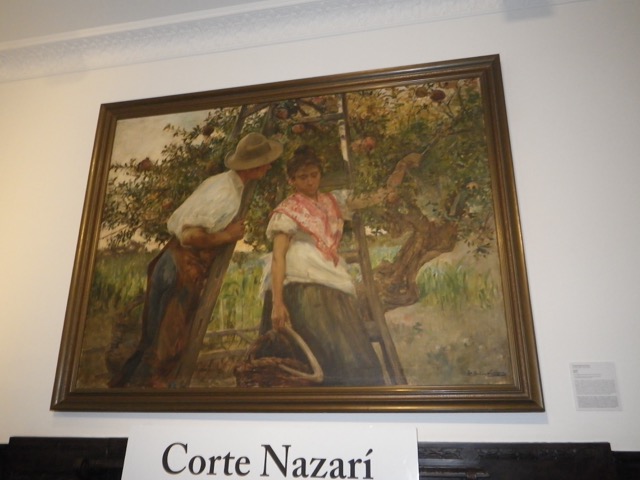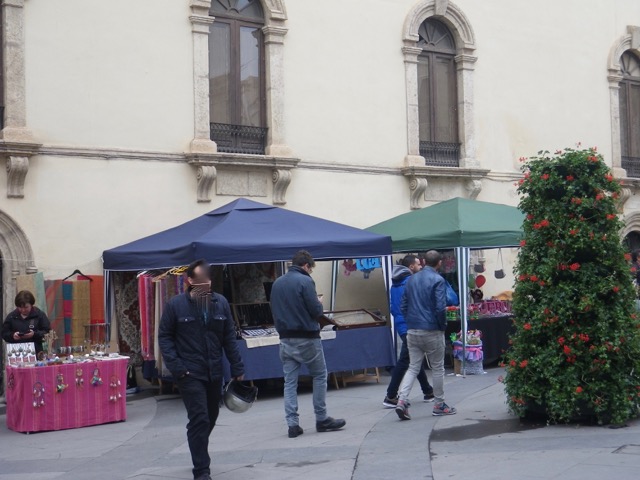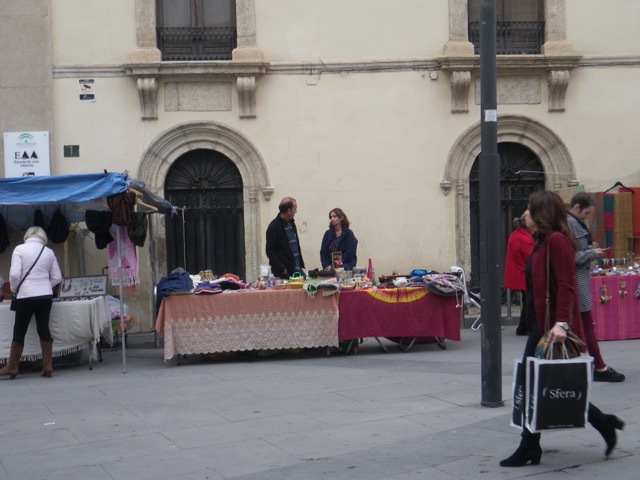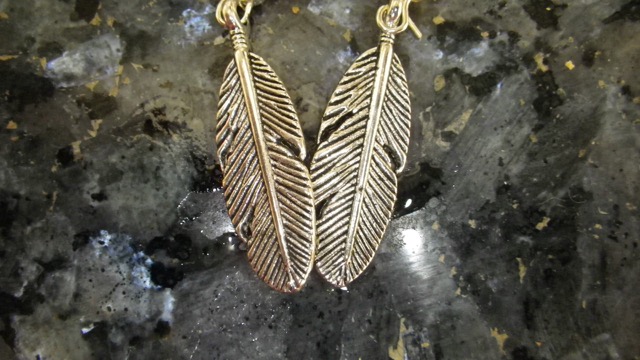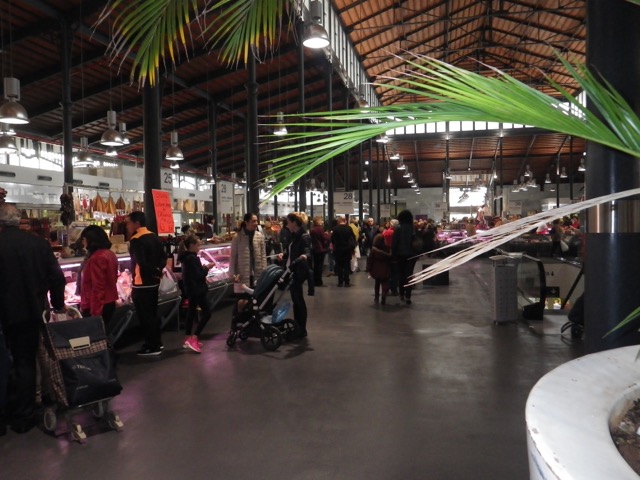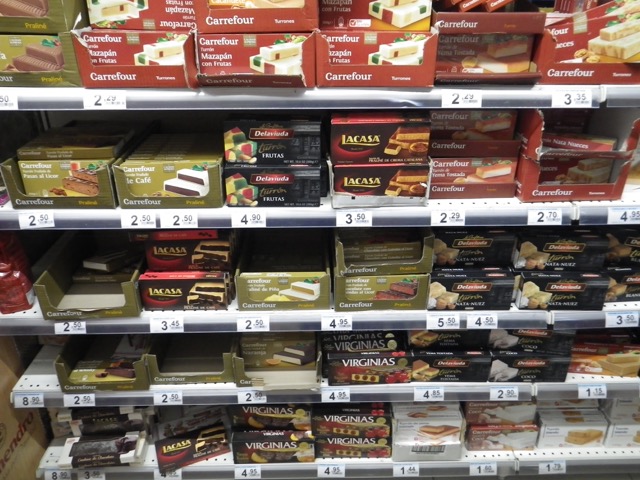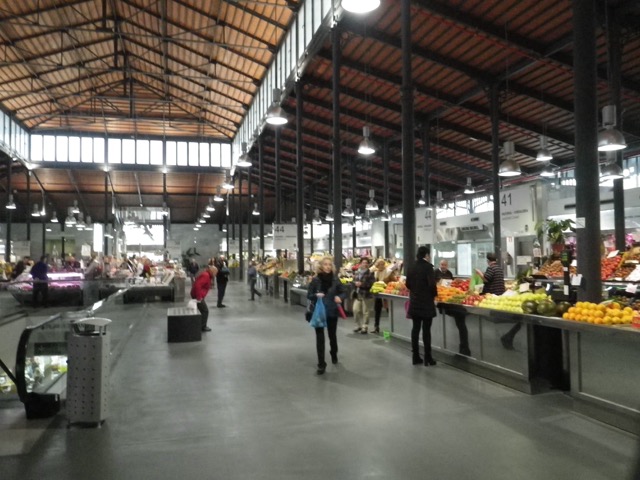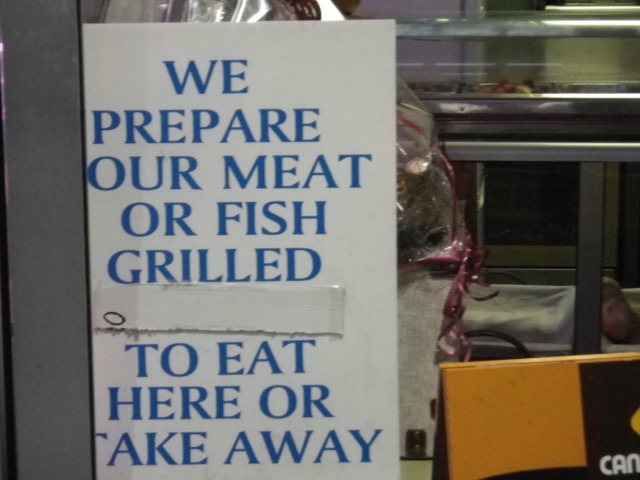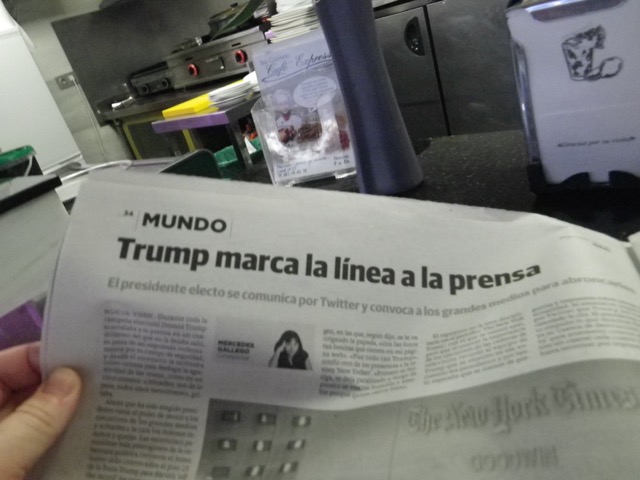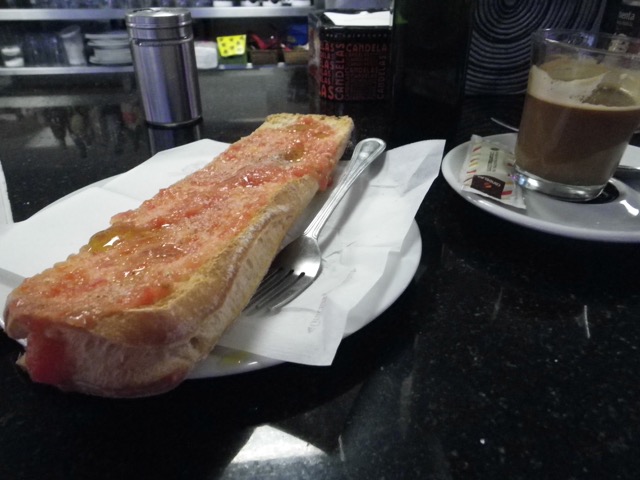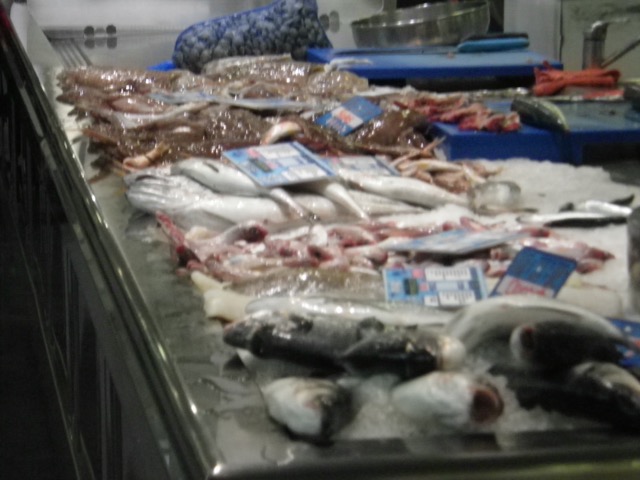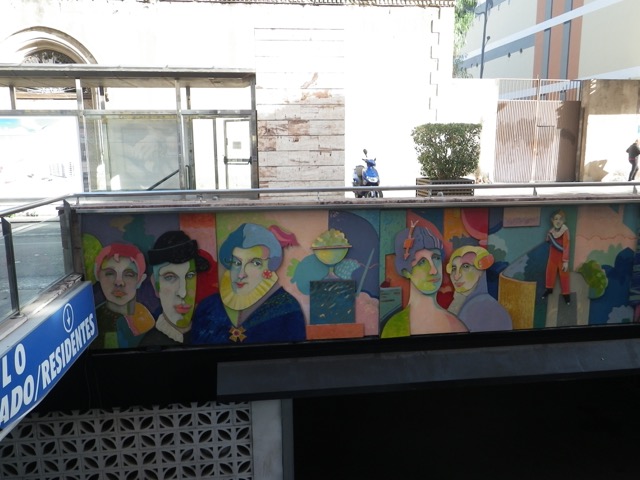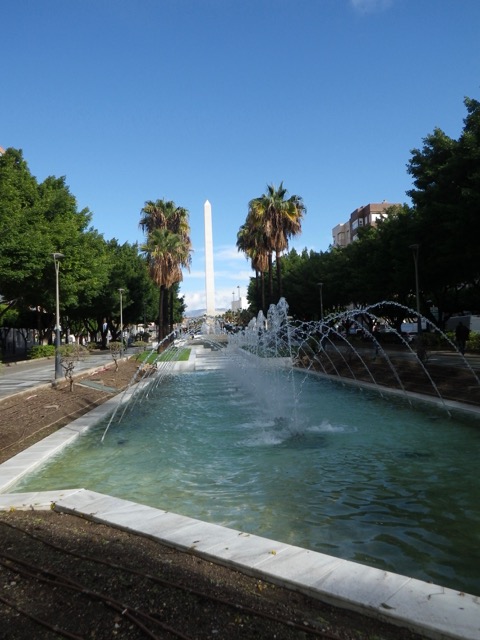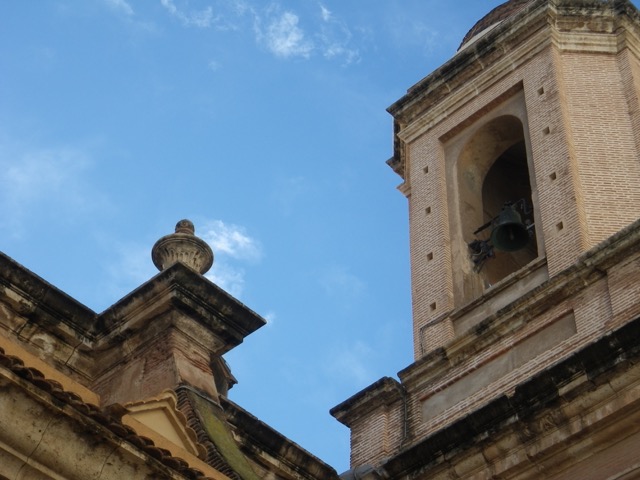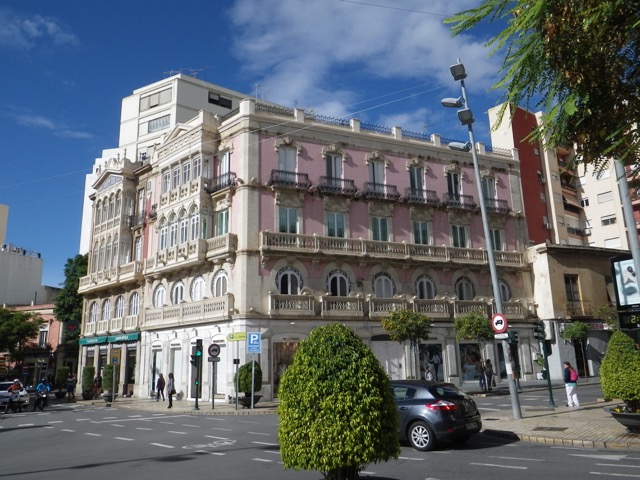I slept in a tad this morning and took it easy since I’ve been getting up early since I got here. I did a bit of my work for the day and set off late morning for the third museum in Amsterdam that I might have visited had I had to pay piecemeal for each entry: the Tassen Museum of Bags and Purses, the largest such museum in the world.
The sky was a strange colour as I stepped out of my flat.

I love this purple building at the end of my block, a good example of how a building can be colourful, but not garish.
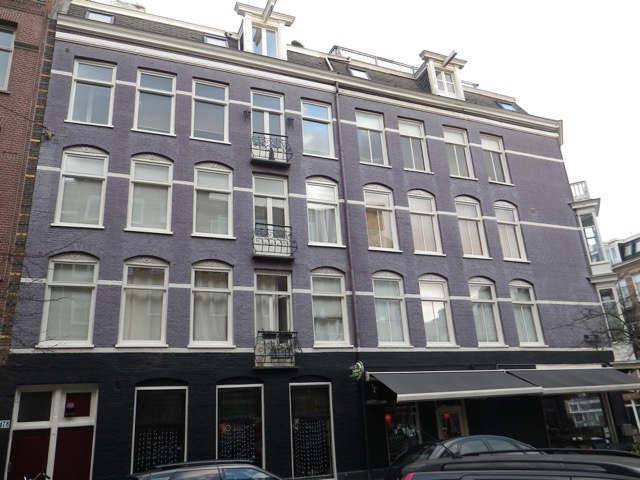
Moped parking spaces.

What is that blinding thing in the sky?!

A museum devoted to cat stuff. Sadly closed today.

The Museum of Bags and Purses is in a canal building and the exhibits cover the history of bags from the 16th century to present day. The building housing the museum was built in 1664 for a former mayor of Amsterdam, Cornelis de Graeff, and restored as the museum in 2007.

I took about 50 billion pictures in this museum, but since everything was behind glass and I couldn’t use a flash, not many came out well. So I will show restraint. 🙂 I went through twice, so the pictures are going to be out of order. You enter the museum into a ground floor bag shop and then go up to the third floor to then work your way down.

Gaming purses.

Beaded bags were quite a luxury. They were first knit, then woven. Some have as many as 50,000 beads.

The need for sturdier bags made leather popular as the train travel age started.

Tortoiseshell was popular, but expensive and finicky. Advances in plastics made it possible to create replicas.

Snake skin with ivory clasp.

Prickly pear fibres and lace, dating back to 1789!

Chatelaines, which hung from a belt and then things like a thimble, watch, keys, sewing kit, etc. would hang from them.

Bags with silver frames were passed down from mother to daughter. The frame would be reused with a new bag.

Men’s leather bag. Bags for men fell out of favour as their clothing got pockets.

Very similar to chainmail.


Until recently, it was mandatory for Dutch schoolchildren to have a leather bag like these. Now, many use backpacks.

These were used before the leather bags. They held a tablet and stylus and served as a lap desk.

Novelty bags.

I like the stegosaurus look with the turquoise knobby bits.

All sorts of travelling cases.


These were popular as plastic became a common material.

Tulip bag.

I had to pay a 1.50 euro surcharge as they have a special exhibit about royal bags. I breezed through this on my first pass as it was crowded.

These belonged to Queen Elizabeth II.
I had kind of sort of thought to treat myself to a cream tea in their café, but it was closed today. I was told to help myself to free coffee or tea and cookies, though! Wow! Am I glad I didn’t get a coffee before going in and, of course, this rather makes up for the supplement I had to pay. 🙂

The café setting is extraordinary.






The crowd had gone through, so I went back to the top and started all over.

This 16th century bag had secret compartments. Intriguing.

Very pretty. Kind of looks like Mount Fuji?

Closeup of chatelaines with “stuff” on them.

Yup, Charlie Chaplin.

Very heavy cut steel bags.

See the teeny pencil?

Art Deco bags.

The SHOES!

Peacock feather bags.

Lobster bag, LOL

Margaret Thatcher’s “Weapon.” Google it!

Gateau (cake) bag.

“Socks” bags after the Clintons’ cat. To the left of it is a picture of Hillary Clinton holding it.

Versace bag used by Madonna at the premiere of “Evita.”

Sunflower bag.

Love the budgies.

*Swoons* Love that snake head clasp!

This bag was held by a member of the Dutch royal family and we got to see how it was selected and dyed to match the dress.
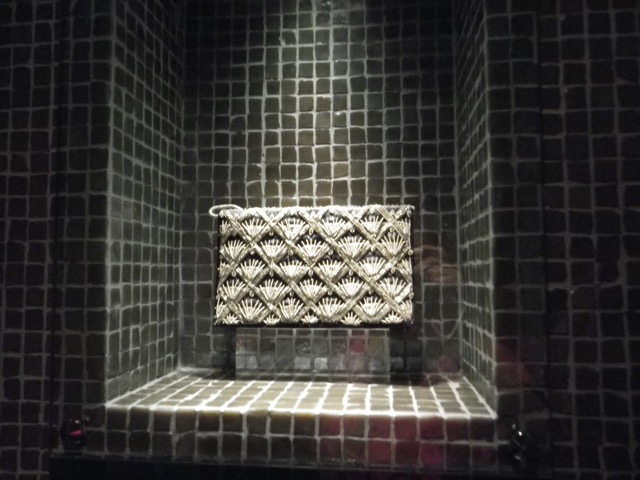
This jewel was in a toilet stall!

And this one in another stall!

Wall hanging.

Amusing donations box.

I’m always attracted to bags with such bright colours (we’re in the shop now!).
The Tassen Museum of Bags and Purses was incredible. I am a real bag nut, but not in the sense of wanting expensive designer bags that I’m afraid to use. I love finding unique bags at thrift shops, especially well worn leather ones. I have little patience now for bags made of PVC that will age quickly. There were so many bags in the shop that I would have loved and not all were at terrifying prices. I would definitely consider this museum a place to shop for a nice bag and I think it would be lovely to have high tea in their café, although if you factor in the price of admission, it’s extremely pricey. Definitely something I’d consider if I was a Museumkaart owner living here full-time, as that would reduce the total cost immensely.
I didn’t get anywhere near the next museum on my list when I passed one that was right up my alley, but hadn’t been on the list of Museumkaart member museums I’d consulted. I’d figured out that that list was outdated since none of the admission prices were right. So I went in and asked if I could get in free. Yes! It is the Museum Willet-Holthuysen, which gives you the opportunity to wander all through a canal house that was willed to the city of Amsterdam for public use in the 19th century. I’m a bit of a voyeur in that I like to go through houses and see how they’re decorated, so I could not miss this!
You know straightaway that the family was rich because they had one one set of stairs but two leading up to the front door. But you enter the building through the basement door.

Looking down the basement hallways to the kitchen and the back of the house.

All of these items were crocheted, LOL!

Some of the kitchen wall tiles had interesting details.


Even the clock was crocheted!



The secondary kitchen, for messy chores.


The garden at the rear of the house.

Look towards the front of the house.


You then go up this magnificent staircase to the first floor of the house, with the public rooms.



The front door.

The house had a doorbell.


The women’s salon, where the owner, Louisa Holthuysen, received her guests.


The ballroom, where they had parties.






The stunning blue “club room,” where the husband, Abraham Willet, received his male friends.

Love that painting at the top.

The ceiling.


Love this painting too.

The dining room had a low ceiling because there is a pantry above, halfway between this floor and the next. The brochure said the pantry was not open to the public, but it was. Signage throughout the property indicates that they are constantly renovating it, so I guess the brochure is a tad outdated.



Now into the conservatory at the rear of the house.



Signage says this room needs a lot of work to return it to its former vibrancy.

Heading upstairs to the private rooms, I found the entrance to the pantry. This room would have held a lot of valuable items, so only the mistress of the house would have had a key and the room would have been regularly inventoried.



Heading up from the pantry.

Skylight.

This staircase would have led to the garret, which had the laundry facilities. To the left is Abraham’s library.

Can you see the door in the corner? It led to one of Louisa’s rooms. This way, they could go see each other without having to pass any servants.

My flat has a seat like this. Really like it. 🙂


Can you imagine sitting at that desk looking down to the garden?

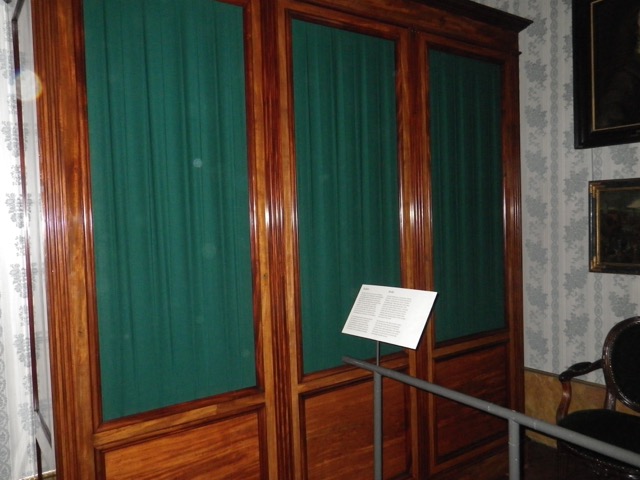

There is another “secret” door in the library, but there was no mention of where it leads.

Stained glass in the hall.


Garish carpet in the “collection room.” Louise and Abraham were very well to do and did not have children. They spent their time collecting art and socializing.

The incredible wallpaper in the collection room.

The rest of the house was “modernised” by Louise and Abraham when they married, but this room kept the traditional dark wood Dutch furnishings from a hundred years prior.

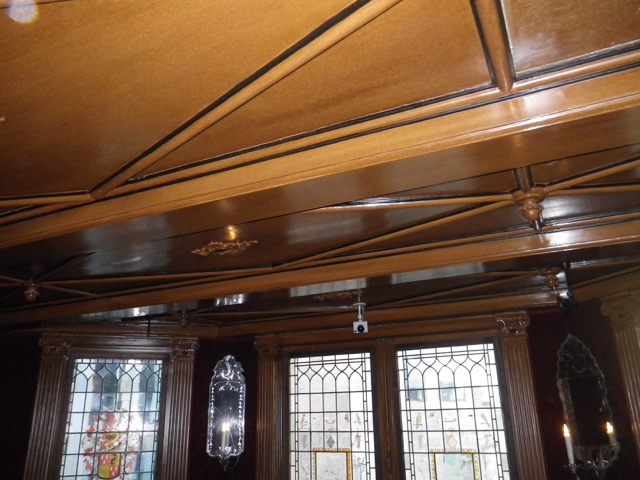
Then, the bedroom.

The bed was actually two twin beds pushed together.

The wash area. Hot water had to be brought up from the basement.



Another secret door.
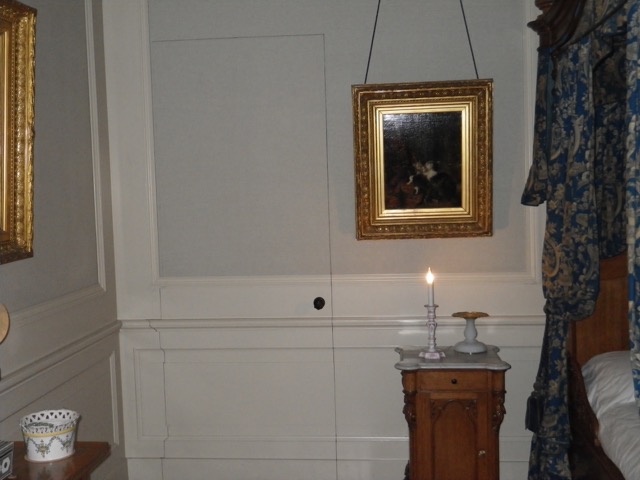
Chest in the hallway.

Abraham and Louisa. She inherited the house from her father. They married in their late thirties.

The final spaces exhibit some of Louisa and Abraham’s things.






Hat and umbrella stand (I think) by the visitor entrance.

The two entrances.

What an extraordinary treasure this museum was!
I headed towards my next destination and kept my eye out for food along the way. I’m really not into the whole holiday thing, but there are some decorations that I really enjoy. These are so pretty.

WHAT IS THAT???!!!


Drawbridge over a canal.




Chipotle-style burrito shop.

Back of the house, with the garden again.


Approaching Rembrandt Square. I went the opposite way of my next destination, but this area was my best bet for lunch.

Statue of Rembrandt with The Night Watch.



Lunch!

NOT New York style pizza, but it hit the spot!


This is a cinema.

I prefer the real kind, thank you very much (yes, this is candy sushi!).

There are so many wonderful cheese shops in Amsterdam.



I found a second-hand store where you pay by the weight. A tee-shirt is about 5 euros and a kilogram costs about 35 euros. They had really lovely stuff.

My final destination of the day was the Rembrandt House, which he owned before foreclosing and going bankrupt and in which he painted many of his masterpieces. Again, I’m not a fan of Rembrandt, so I wouldn’t have paid to do this, but I thought it would be interesting to see his studio and, of course, I like house tours.

Well… I was about to start in the museum when a staff member told me I had to check my purse. That was not going to happen! I’ve never been asked to check it before as it is not huge. I told her that I had all my valuables in it and would take care to not have it hit walls or anything. She sarcastically retorted that I don’t care about my stuff since the zipper was open! What business is it of hers if I choose to have my bag open somewhere that there is nobody around?! So that set a sour tone for the tour.
Then, employees hovered around me during my entire time in the museum. I thought I was imagining things, but one guy followed me almost all the way through and whenever I’d look up, I found him staring at me. Finally, I got told off for trying to take pictures (no flash) when literally every other customer was taking pictures and not being told to desist! All I can think is that because I didn’t pay for admission, I wasn’t considered a real guest?
So needless to say, I didn’t get much out of my visit because I was so distracted and I rather regret expending the energy of getting to the Rembrandt House. It is crazy expensive (12.50 euros) and quick to tour, so I don’t recommend anyone go unless they have a Museumkaart and/or are huge fans of Rembrandt.
At any rate, the audio guide was really good. The most interesting thing I learned is that people at the time slept in a sort of cabinet and that they reclined rather than laid flat.
When Rembrandt declared bankruptcy, an inventory of all his possessions was made. That combined with sketches he made of his home made it possible to furnish the restored space very realistically. It was interesting to see his collections room with things like seashells, exotic stuffed animals, and books. A few of his works are exhibited in the house, including those of four of the five senses, the first of his works that I actually rather like.
But, of course, the pièce de résistance was his studio. What struck me when I came into it was the light. It was a good reminder that I should place my own studio where it faces north to get that soft consistent light that is so perfect for a painting studio. There was someone there demonstrating how Rembrandt would have made his own paints and I got to smell that wonderful scent of linseed oil I love so much.
Upstairs from the main studio was another studio where Rembrandt’s students studied. It must have been cold up there in winter as there was no obvious source of heat the way there were two stoves in Rembrandt’s space.
Finally, there was a series of rooms with drawings and etchings made by some of Rembrandt’s students. I was tired by this point and ready to leave, so I rather breezed through this and didn’t even catch the artist’s name. I just wasn’t keen on his style.
It was mid-afternoon by this point and I was done. I asked Google Maps to get me home and decided I couldn’t justify a tram, so off I went.
Amsterdam is very damp so you see mossy footpaths all over the place.

I was afraid to ask the price of that cute Batman purse in case it was affordable!

While I knew that Maps was sending me in the right direction when I set off, I found myself walking longer than expected without having to turn. I realised that Maps had stopped navigating and that I was farther from home than when I’d started! This would happen three times before I figured out that because I was asking Maps to navigate to a landmark that was closed, it figured I was an idiot and didn’t mean to go there. Google’s idiocy never fails to astound me! And I was using the landmark because Maps doesn’t recognise my address. *sighs*
I put the app away in disgust and decided that even though I was really getting too close to home to make it worth taking a tram, I would. I passed the blumenmarkt on the way, a floating market selling all manner of flowers and bulbs.


There was a bit of a wait for a tram when I got to a stop, so I popped into the supermarket right there to get some dinner stuff (been shopping daily) and when I got out, the tram was just pulling up. It felt absolutely ridiculous to pay 4CAD to go about four stops or just shy of 2KM, but I was footsore (still breaking in my new boots) and really tired as I hadn’t sat down since I left except for the few minutes when I had my coffee. My tram driver was really sweet!
I got in and went straight work, then made a curry for dinner. The Patak sauces that I like that are such a luxury in Canada are super cheap here (but of course), so I’m working my way through all the flavours I haven’t tried yet. Why not? 🙂
This will be my last really full day out for a bit as I have larger quantities of work to do every day. But I should still be able to go out to do a museum every afternoon.
My Museumkaart has already paid for itself and I am 22 euros or 32CAD ahead!











































